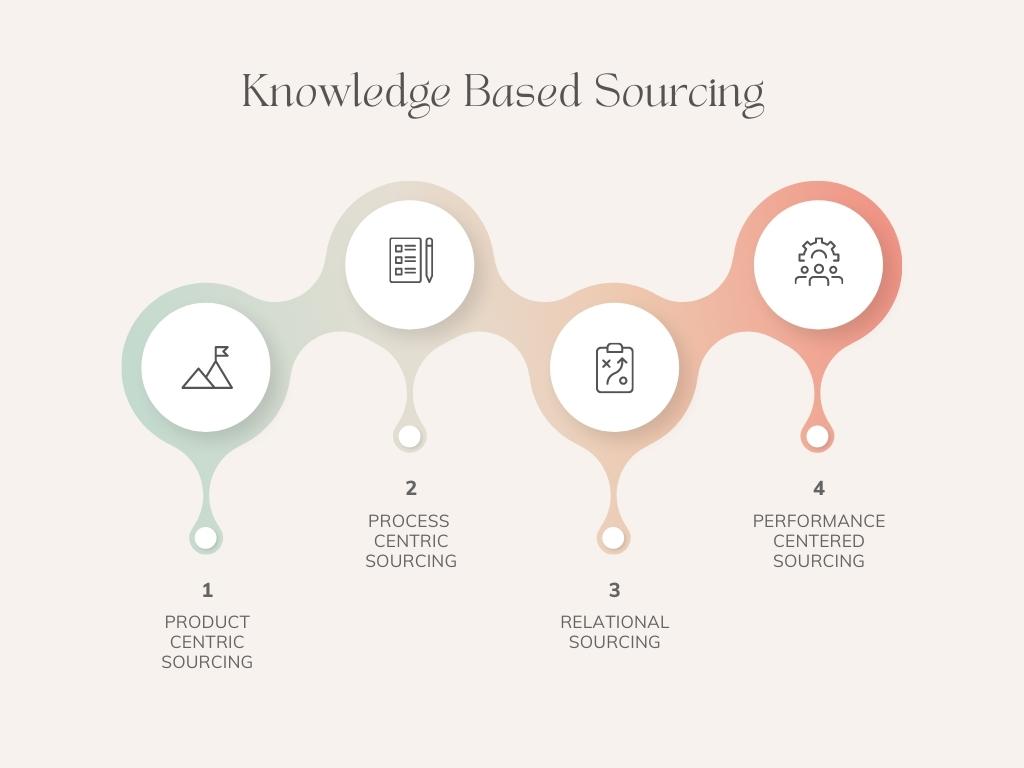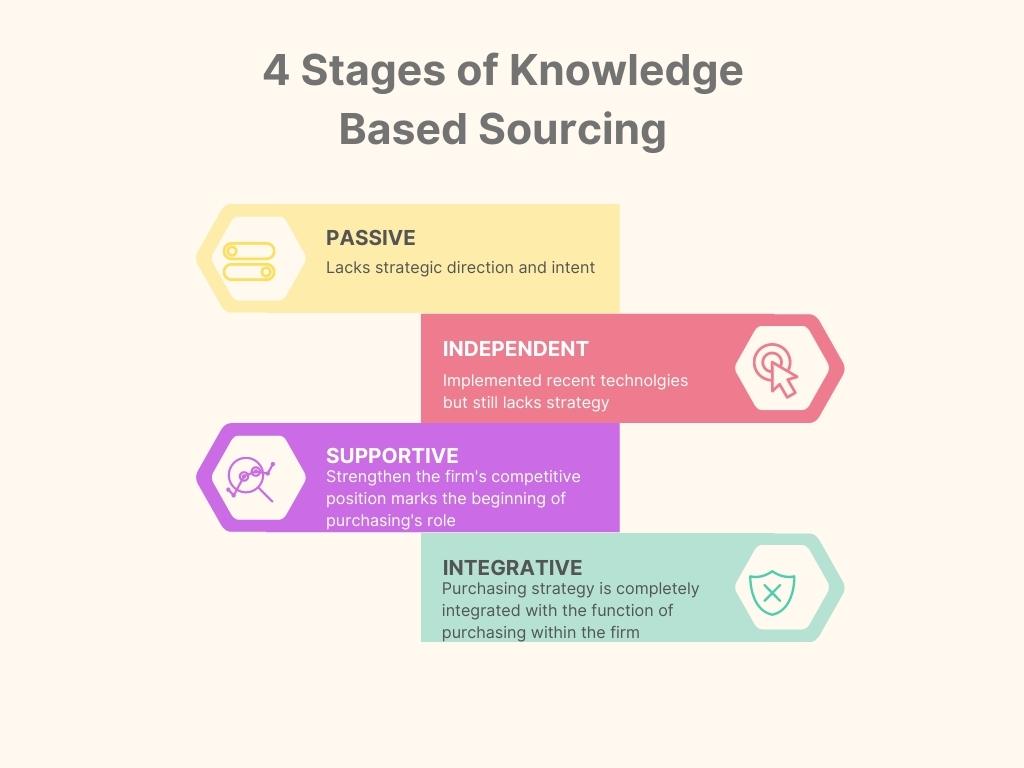What is knowledge based sourcing supply chain?
Both the theory and practice of purchasing are continuously evolving. This had led to the emergence of knowledge based sourcing. It is, in fact, an ever-changing and developing field in terms of both theory and practice. When one considers the growth of purchasing over the past three decades, one begins to notice a distinct pattern of evolution. It depends on what the individual wants to get out of it; the pattern can be presented in a variety of different ways. In this section, we break the pattern of evolution down into two different perspectives, each of which contains four essential steps. The first perspective looks at how operational focuses have shifted, whereas the second perspective focuses mostly on how attributes have shifted.
What are the 4 Stages of Knowledge-Based Sourcing?
The 4 Stages of Knowledge-Based Sourcing Are
- Product Centric Purchasing
- Process-Centric Purchasing
- Relational Purchasing
- Performance Centered Purchasing

The initial step may be referred to as “product-centered purchasing.” The operation is primarily and exclusively focused on the purchasing of tangible products and the effects that this has on the overall business. Typically, it is evaluated based on the five rights (right price, right time, right quantity, right quality, and from the right sources).
The second stage may be referred to as “process-centered purchasing.” It is primarily an operation that is focused on the process. It goes beyond the direct results that the purchasing activities produce and into the processes that are used to produce those results. This indicates that the managers have come to the conclusion that the processes are both the enablers of the purchasing outcomes and, in many cases, the controllers of those outcomes.
The third stage is sometimes referred to as “relational purchasing.” The operation places a strong emphasis not only on the process itself but also on the relationships that exist between the various organizations. The relationship was adopted as the primary management tool in order to improve product quality and technological advancements; in addition, it had a significant and favorable impact on the integration and growth of suppliers.
The fourth stage is sometimes referred to as “performance-centered purchasing.” It places an emphasis on the optimum performance of the business as a whole as well as the management of the contributions made by the purchasing function to the overall performance of the business. The purchasing function of the company has been strategically connected to the organization’s ultimate goals and the delivery of those goals as a result of this. It is an approach that focuses on systems.
What are the characteristics of the 4 Stages of Knowledge Based Sourcing?
The Characteristics of these 4 stages of Knowledge based sourcing are:
- Passive
- Independent
- Supportive
- Integrative

The character of stage one is described as “passive.” During this stage, purchasing can be characterized as lacking strategic directions and being primarily reactive to the demands of operational activities. A significant amount of the purchasing manager’s time is spent on routine operations, which provide little visibility into the supply chain. The selection of the supplier is made solely on the basis of price and availability.
The character of stage two can be described as “independent.” At this stage, the purchasing department may have implemented the most recent technology and process, but it is possible that they do not have a strategy that is in line with the industry standard. It is possible that links have been established between purchasing and technical disciplines; performance is based on cost reduction also known as price based sourcing; top management recognizes the importance of professional development and the opportunities in purchasing that contribute to profitability.
The character of stage three can be described as “supportive.” The adoption of purchasing strategies and products that strengthen the firm’s competitive position marks the beginning of purchasing’s role in providing support for the firm’s competitive strategy. Many businesses view their suppliers as one of their most important competitive resources. Continuous monitoring and analysis are being performed on the supply market, the progression of products, and the capabilities of suppliers.
The fourth stage is known as the “integrative” stage. At this point, the purchasing strategy is completely integrated with the function of purchasing within the firm. The concept of multifunctional teams and the training of purchasing professionals in multiple functions starts to gain traction. Communication, both open and closed, with other functional departments is a requirement of the processes in place. The success of purchasing is evaluated according to how much it contributes to the overall success of the company.
Conclusion
It’s interesting to see that the four stages from both points of view can be roughly matched with a few obvious problems. But a more thorough method will be needed to declare the theoretical match and make a new stage model for the buying process. The discussion here is just an introduction to the topic and is meant to get people thinking and talking more.
But there’s no doubt that the buying process has become much more complex and has a much wider and deeper effect on how well a business does. It’s moving away from short-term goals and toward long-term goals. It’s moving from a function to processes, from transactional to relational, and from saving money to improving performance.
Buying in the future might look like knowledge-based buying, which is based on knowledge of the whole business’s goals and stakeholders’ interests, knowledge of the suppliers and their capabilities and potential, knowledge of people and how they feel about relationships and culture, and knowledge of how people use technology.
Samrat is a Delhi-based MBA from the Indian Institute of Management. He is a Strategy, AI, and Marketing Enthusiast and passionately writes about core and emerging topics in Management studies. Reach out to his LinkedIn for a discussion or follow his Quora Page
